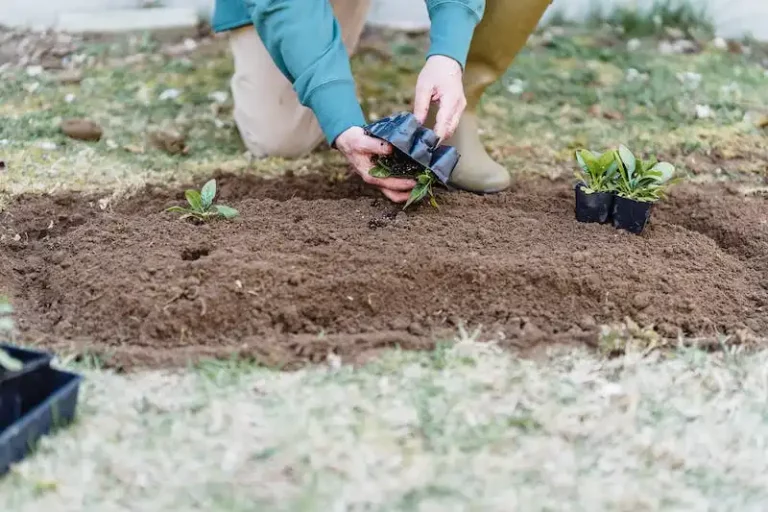Sweet corn, also known as maize, is a popular vegetable that is loved by many around the world. It is a delicious and nutritious crop that can be grown in gardens and other outdoor spaces. In this article, we will explore the different varieties of sweet corn, how to plant and grow them, and the best practices for harvesting.
There are several varieties of sweet corn to choose from, each with its own unique taste and characteristics. Some popular varieties include traditional super sweet, quick growth, and long season varieties. These different types of sweet corn can be grown in different regions and climates, so it is important to choose the correct variety for your area.
Growing sweet corn is relatively easy, but there are a few key things to keep in mind. Sweet corn is generally planted outside, in rows or blocks, with each stalk approximately 10-14 inches apart from each other. It is important to sow the seeds at the correct depth and spacing, as well as provide proper support for the tall stalks as they grow. Sweet corn is a heavy feeder, so it is important to fertilize the plants throughout the growing season.
One of the challenges in growing sweet corn is that it is a wind-pollinated crop, which means that the pollen from the male flowers must be transferred to the silk on the female flowers in order for the ears to form. To help with pollination, it is recommended to plant sweet corn in blocks rather than in single rows. Companion plants such as beans and squash can also help attract bees and other pollinators to the garden.
Harvesting sweet corn is a rewarding experience. Sweet corn is generally ready to be harvested when the silks turn brown and the kernels are plump and juicy. To harvest, simply twist each ear of corn downward and then pull it off the stalk. Fresh sweet corn can be enjoyed immediately, or it can be blanched and frozen for later use. Sweet corn can also be canned or dried to preserve it for a longer period of time.
What is the correct way to plant sweet corn in the home garden
In the world of gardening, sweet corn is a popular and delicious crop to grow. Whether you are a beginner or have been gardening for years, knowing the correct way to plant sweet corn can ensure a successful and abundant harvest.
First, it is important to choose the right variety of sweet corn for your garden. There are two main types of sweet corn: sugary enhanced (SE) and supersweet (SH2). SE varieties have a traditional sweet flavor and are easier to grow, while SH2 varieties have a higher sugar content and a longer shelf life. It is also important to consider the length of your growing season when choosing a variety, as some types of corn take longer to mature than others.
Before planting sweet corn, it is recommended to prepare the soil by adding compost or other organic matter. Sweet corn thrives in well-drained soils with a pH between 5.8 and 6.8. It is also a good idea to test your soil before planting to ensure it has the right nutrients for corn to grow.
Sweet corn can be planted directly in the garden or started indoors and transplanted outside. If you choose to start seeds indoors, plant them about 3-4 weeks before the last frost date. Transplant the seedlings outside when the soil temperature reaches at least 50 degrees Fahrenheit.
When planting sweet corn directly in the garden, create hills or blocks of plants to help with pollination. Plant the seeds about 1 inch deep and 4-6 inches apart. It is recommended to plant sweet corn in blocks rather than long rows, as this allows for better pollination. Planting multiple rows allows the wind to help pollinate the plants.
Caring for sweet corn plants involves regular watering, weeding, and fertilizing. Mulching with organic materials, such as straw or recycled leaves, can help retain moisture and control weeds. It is important to keep an eye out for pests and diseases, and take appropriate measures to control them.
Most sweet corn varieties are ready to harvest about 20-25 days after the tassels appear. To check if the corn is ready, peel back the husk and pierce a kernel with your fingernail. If a milky liquid is released, the corn is ready to be picked. It is best to harvest sweet corn early in the morning, as the sugars are at their peak. Once harvested, sweet corn should be refrigerated and consumed as soon as possible for the best flavor.
In conclusion, planting sweet corn in the home garden can be a rewarding experience. By following the correct planting methods and providing the necessary care, you can enjoy fresh and delicious sweet corn throughout the growing season.
Planting
Planting sweet corn can be a quick and easy task that you can do at home in your garden. When planting sweet corn, there are a few important things to note.
Firstly, sweet corn is generally grown in hills, where multiple plants are planted together in a group. This helps with pollination as it increases the chances of wind or insects carrying pollen from the male flowers to the female flowers.
Before planting, it is important to determine what type of sweet corn you want to grow. There are different varieties available, each with its own characteristics. You can choose from super sweet, standard sweet, or yellow sweet corn.
When planting sweet corn, you have a few options. You can either sow the seeds directly into the soil or start the seeds indoors and then transplant the seedlings to your garden. Both methods have their own advantages and it depends on your preference and the conditions in your area.
If you choose to sow the seeds directly, make sure to plant them approximately 1 inch deep and 6 inches apart. This will give the plants enough space to grow and prevent overcrowding. It is also important to note that sweet corn is a warm-season crop, so it is best to wait until the soil temperature reaches at least 60 degrees Fahrenheit before planting.
If you decide to start the seeds indoors, you can sow them in individual pots or seed trays filled with a growing medium like coconut coir. This will help the seeds germinate and give them a head start before transplanting them outside.
Once the corn plants start to grow, they will require regular watering to keep the soil moist. It is also important to keep an eye out for weeds and remove them as they compete for nutrients with the corn plants.
As the sweet corn plants grow taller, they may need support from a pole or stake to prevent them from falling over. This is especially important in areas with strong winds.
Throughout the growing season, it is important to monitor the corn plants for any signs of pests or diseases. There are different solutions available for common problems like corn earworms or corn smut.
When the sweet corn stalks start to produce silks, it is a sign that the corn is almost ready for harvest. The silk will turn brown and dry, and the kernels inside the husks will become plump and juicy.
Harvesting sweet corn at the correct time is crucial for its flavor and texture. To check if the corn is ready, gently pull back the husk and pierce a kernel with your fingernail. If a milky liquid comes out, the corn is ready to be picked.
It is best to harvest sweet corn in the morning when the temperatures are cooler. This will help to preserve the sweetness and freshness of the corn. Harvesting should be done quickly to minimize the time between picking and eating.
Overall, planting sweet corn can be a rewarding experience that allows you to enjoy fresh and delicious corn right from your own garden.
Pollination
Pollination is the process by which grains of pollen are transferred from the male parts of a plant to the female parts. In the case of sweet corn, pollination occurs when the wind carries pollen from the tassel, which is the stalk on top of the plant, to the silk, which is located on the ear of corn. The silk acts as a conduit for the pollen to reach the individual kernels or grains of corn.
When growing sweet corn, it is always important to plant multiple rows to ensure proper pollination. This is because corn plants are monoecious, meaning each plant has both female and male flowers. However, the male and female flowers are located on separate parts of the plant. Planting in blocks also helps increase the chances of successful pollination.
If you want to save seeds from your sweet corn, it is important to keep in mind that cross-pollination can occur with other corn varieties. To prevent cross-pollination, it is recommended to isolate sweet corn plants from other corn varieties by a distance of approximately 200-600 feet, or by planting them at different times.
Another option is to sow different varieties of corn at different times. For example, if you want to grow an early variety of sweet corn alongside a later variety, you can stagger your plantings so that the two varieties are not flowering at the same time.
Sweet corn can also be pollinated by hand if you want to ensure pure seeds or if you are growing a variety that is not suited for your region. To hand-pollinate, simply collect pollen from the tassel of a desired male plant and brush it onto the silk of the female plant.
Pollination is an essential process for sweet corn, as it directly affects the quality and size of the ears that will be harvested. Without proper pollination, the kernels may not develop fully or may be poorly filled.
UF/IFAS, the University of Florida’s Institute of Food and Agricultural Sciences, provides a quick guide on sweet corn pollination on their website, ifas.ufl.edu. The guide explains in further detail the different methods and solutions for successful pollination in sweet corn crops. Companion planting can also be beneficial in attracting pollinators to the garden, such as planting flowers or herbs that attract bees or other pollinating insects.
In summary, pollination is a crucial step in the sweet corn growing process. Understanding how pollination works and implementing strategies to ensure successful pollination can help you grow healthy and productive sweet corn plants. Whether it’s through wind pollination, hand pollination, or other methods, taking the time to give your sweet corn plants the pollination they need will result in delicious ears of corn that are ready to be harvested.

